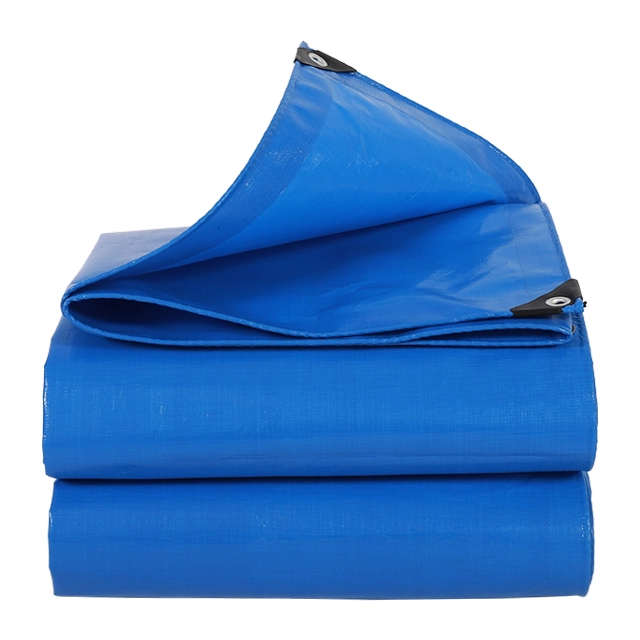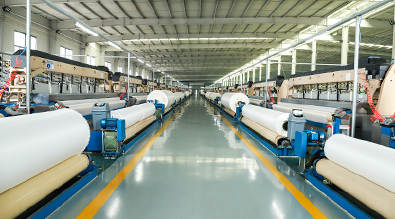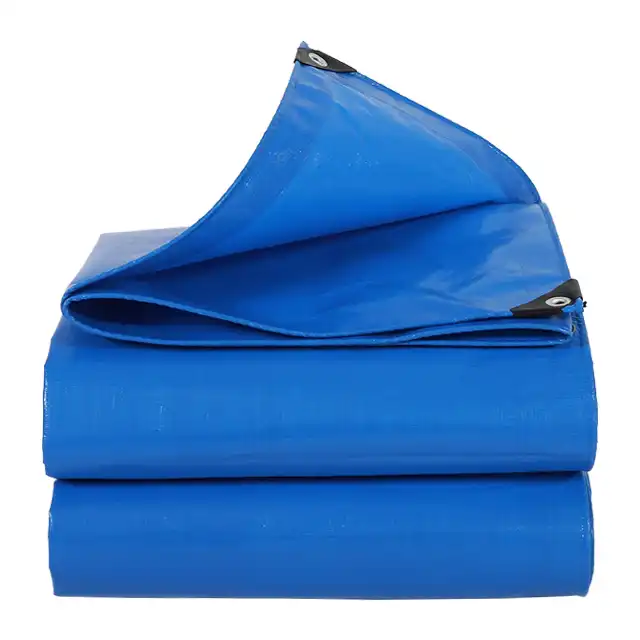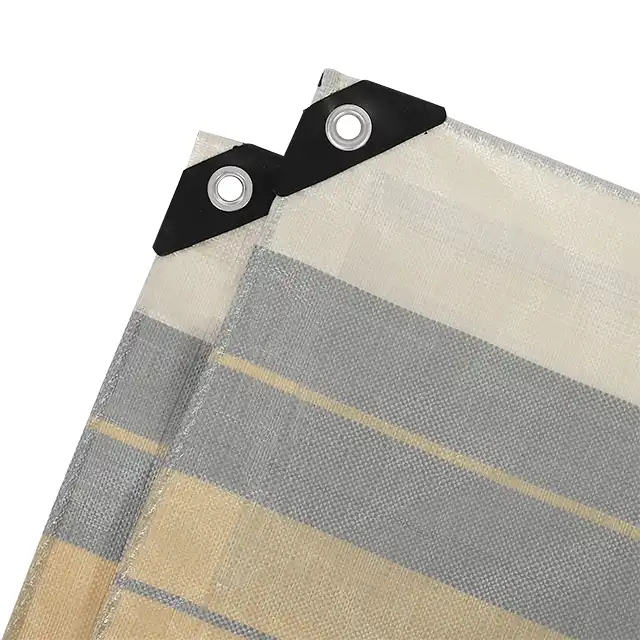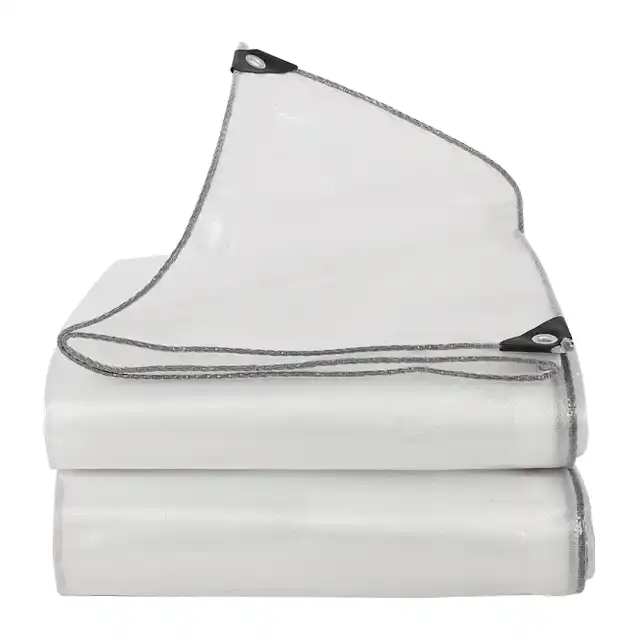Sun Protection Tarps: Key Insights for 2025 Market Trends
As we move through 2025, the market for sun protection tarps continues to evolve with innovative technologies and changing consumer needs. Sun protection tarps have become essential components in various sectors, from construction and agriculture to recreational activities and residential applications. This comprehensive analysis explores current market trends, technological advancements, and future projections for sun protection tarps, offering valuable insights for buyers, distributors, and end-users alike. Understanding these trends is crucial for making informed decisions in an increasingly competitive market where quality, durability, and UV resistance are paramount factors.
The Evolution of Sun Protection Tarp Technology
Breakthrough Materials Enhancing UV Resistance
 The landscape of sun protection tarps has undergone significant transformation with the introduction of high-density polyethylene (HDPE) woven fabrics laminated with low-density polyethylene (LDPE) coating. These advanced materials have revolutionized the industry by offering superior UV protection compared to conventional options. Modern sun protection tarps now feature specially formulated UV inhibitors that can block up to 99% of harmful ultraviolet radiation, extending the lifespan of covered items and providing essential protection for both people and possessions. The latest technologies incorporate specialized additives during the manufacturing process, creating a molecular structure that effectively disperses and absorbs UV radiation before it can penetrate the tarp's surface. This is particularly important as global UV radiation levels continue to rise due to environmental factors, making high-performance sun protection tarps not just a convenience but a necessity for many applications. Leading manufacturers like Linyi Shengde Plastic Co., Ltd. have invested in advanced extrusion technologies that allow for precise control of UV treatment percentages, offering options ranging from 1% to 7% UV resistance depending on specific application requirements.
The landscape of sun protection tarps has undergone significant transformation with the introduction of high-density polyethylene (HDPE) woven fabrics laminated with low-density polyethylene (LDPE) coating. These advanced materials have revolutionized the industry by offering superior UV protection compared to conventional options. Modern sun protection tarps now feature specially formulated UV inhibitors that can block up to 99% of harmful ultraviolet radiation, extending the lifespan of covered items and providing essential protection for both people and possessions. The latest technologies incorporate specialized additives during the manufacturing process, creating a molecular structure that effectively disperses and absorbs UV radiation before it can penetrate the tarp's surface. This is particularly important as global UV radiation levels continue to rise due to environmental factors, making high-performance sun protection tarps not just a convenience but a necessity for many applications. Leading manufacturers like Linyi Shengde Plastic Co., Ltd. have invested in advanced extrusion technologies that allow for precise control of UV treatment percentages, offering options ranging from 1% to 7% UV resistance depending on specific application requirements.
Durability Innovations for Extreme Conditions
Recent advancements in sun protection tarps have focused extensively on enhancing durability under extreme weather conditions. The latest generation of tarps features reinforced edges, heat-sealed seams, and strategic reinforcement points that dramatically increase tear resistance and overall longevity. These innovations address the primary failure points of traditional tarps, ensuring reliable performance even when subjected to high winds, heavy rain, or extreme temperature fluctuations. The incorporation of tear-resistant technology involves using high-strength yarns woven in patterns specifically designed to distribute tension evenly across the entire surface of the tarp. This structural innovation prevents small tears from expanding and compromises the integrity of the entire sheet. Modern sun protection tarps now demonstrate impressive tensile strength, with some heavy-duty options capable of withstanding forces exceeding 300 pounds per square inch. Arctic flexibility features allow these tarps to remain pliable and functional even in sub-zero temperatures, while remaining resistant to cracking or becoming brittle. This enhanced durability translates directly into cost savings for end-users, as replacement cycles are significantly extended, and maintenance requirements are minimized.
Eco-Friendly Approaches in Tarp Manufacturing
The sun protection tarp industry has responded to growing environmental concerns with significant strides toward sustainability. Forward-thinking manufacturers now employ eco-conscious production methods that reduce carbon footprints while maintaining high-performance standards. These approaches include using recycled materials in production processes, implementing water conservation techniques during manufacturing, and developing biodegradable or recyclable components. Advanced sun protection tarps are being designed with end-of-life considerations, allowing for easier recycling or responsible disposal. The latest manufacturing techniques also focus on reducing volatile organic compound (VOC) emissions during production, creating a healthier environment for workers and minimizing air pollution. Companies like Sendow Tarpaulin have invested in energy-efficient machinery that reduces electricity consumption while maintaining high output capacities of up to 4000MT monthly. These environmental initiatives reflect a broader industry trend toward responsible manufacturing without compromising the essential protective qualities that make sun protection tarps valuable. The combination of eco-friendly approaches with high-performance characteristics represents the cutting edge of sun protection tarp technology, appealing to environmentally conscious consumers without sacrificing functionality or durability.
Strategic Applications of Sun Protection Tarps in 2025
Agricultural Innovations and Crop Protection
The agricultural sector has embraced sun protection tarps as essential tools for enhancing crop yields and protecting valuable harvests. Advanced UV-resistant tarps are now being deployed in sophisticated ways to create optimized growing environments that balance sun exposure with protection from excessive heat and radiation. These specialized sun protection tarps allow farmers to precisely control light penetration, creating ideal conditions for different crops at various growth stages. Modern agricultural applications include the use of selectively permeable tarps that block harmful UV rays while allowing beneficial light wavelengths to pass through, stimulating photosynthesis without risking sun damage. These specialized sun protection tarps have demonstrated remarkable effectiveness in extending growing seasons in various climatic zones, with some growers reporting season extensions of up to eight weeks using properly deployed tarp systems. The latest designs incorporate micro-ventilation features that prevent moisture buildup while maintaining protective coverage, addressing the common challenge of condensation that often leads to mold and mildew in traditional covered growing environments. The durability features of modern sun protection tarps, including tear resistance and anti-freezing properties, make them particularly valuable in agricultural settings where equipment handling and variable weather conditions can quickly damage inferior materials. With weight options ranging from 65gsm to 280gsm, farmers can select the appropriate thickness based on specific crop requirements and local climate conditions.
Construction Industry Applications and Benefits
The construction sector continues to be one of the largest markets for sun protection tarps, with applications expanding beyond simple weather protection to include specialized functions that enhance project efficiency and safety. High-performance sun protection tarps now serve as critical components in construction workflows, protecting building materials, creating temporary workspaces, and safeguarding sensitive equipment from sun damage. The waterproof properties of modern tarps, featuring 100% waterproof ratings even in heavy downpours, protect valuable building materials from moisture damage while their UV-resistant qualities prevent warping, discoloration, and deterioration of wood, plastics, and other sun-sensitive materials. Construction companies increasingly rely on custom-sized sun protection tarps from manufacturers capable of producing sheets to exact specifications, eliminating waste and improving coverage efficiency on diverse project sites. The latest construction-grade sun protection tarps feature enhanced grip surfaces that reduce slippage during installation and improved puncture resistance to withstand contact with sharp construction debris. With mesh counts ranging from 10×10 to 14×14 and thicknesses between 7-12 mil, today's construction tarps offer precise performance characteristics matched to specific project requirements. The anti-corrosion properties of these advanced tarps also protect metal components from accelerated oxidation caused by UV exposure, extending the usable life of valuable equipment and hardware. Major manufacturers like Linyi Shengde Plastic Co. have developed specialized construction-grade tarps that combine optimal UV protection with job site-specific durability features, creating tools that directly impact project timelines and budget outcomes.
Recreational and Residential Market Expansion
The residential and recreational markets for sun protection tarps have experienced remarkable growth, driven by increased awareness of UV risks and expanding outdoor lifestyle trends. Consumers now seek specialized sun protection tarps for diverse applications, from backyard shade solutions to camping gear and outdoor event spaces. The versatility of modern sun protection tarps has made them essential components of outdoor living environments, providing safe, shaded spaces for family activities while protecting outdoor furnishings from sun damage. The latest consumer-oriented sun protection tarps incorporate aesthetically pleasing designs without sacrificing performance, available in various colors to complement residential exteriors or blend with natural environments during outdoor recreational use. Beyond basic shade functions, these advanced tarps serve as multipurpose tools for outdoor enthusiasts, functioning as waterproof ground covers, emergency shelters, equipment protection, and privacy screens. The easy handling characteristic of modern sun protection tarps makes them accessible to casual users, with lightweight options that fold compactly for storage while deploying quickly when needed. Innovative features like reinforced anchor points, modular connectivity options, and specialized edge treatments enhance the user experience for non-professional applications. The residential market particularly values the shrink-proof qualities that maintain tarp dimensions through repeated use and storage cycles, ensuring consistent coverage without sagging or distortion. With applications ranging from sun shade covers and picnic pads to leisure tents and car canopies, today's sun protection tarps have transcended their utilitarian origins to become lifestyle products that enhance outdoor experiences while providing critical protection from harmful UV radiation.
Quality Factors Driving Market Differentiation
Manufacturing Excellence and Production Capacity
Manufacturing capabilities have emerged as a critical differentiator in the sun protection tarp market, with advanced production facilities directly impacting product quality, consistency, and availability. Industry leaders invest in state-of-the-art manufacturing equipment that enables precision in critical quality parameters while maintaining high output volumes. The most sophisticated production facilities feature integrated quality control systems that monitor every stage of manufacturing, from raw material evaluation to finished product testing. Leading manufacturers like Linyi Shengde Plastic Co., Ltd. operate extensive facilities with impressive production capabilities, including 15 wire drawing lines, over 200 water-jet looms (with specialized 4.25m width capacity), and multiple coating machines capable of handling diverse product specifications. The most advanced extrusion systems employ computer-controlled processes to ensure consistent yarn thickness ranging from 400D to 2500D, creating the foundational strength that determines a tarp's performance characteristics. Production capacity directly influences market responsiveness, with top-tier manufacturers maintaining output capabilities exceeding 100 tons daily of finished sun protection tarps. This capacity allows for responsive fulfillment of large orders without compromising quality standards or delivery timelines. Modern manufacturing facilities also emphasize specialized equipment for critical quality features, such as heat-sealing machines that create waterproof seams and printing systems that apply consistent UV-resistant coatings. The combination of high-capacity production capabilities with rigorous quality control systems characterizes market-leading manufacturers, enabling them to deliver sun protection tarps that consistently meet or exceed performance expectations in every application context.
Material Selection and Performance Testing
The selection of raw materials and comprehensive performance testing have become fundamental quality indicators in the sun protection tarp market, with discerning buyers increasingly focused on verified performance characteristics rather than mere price considerations. Leading manufacturers implement rigorous material evaluation protocols that assess critical performance factors before production begins. Advanced testing methodologies measure UV resistance under accelerated aging conditions, simulating years of sun exposure to predict real-world performance accurately. Quality-focused producers conduct extensive waterproof testing that goes beyond simple resistance checks to include hydrostatic pressure testing that quantifies exactly how much water pressure a tarp can withstand before leakage occurs. The best sun protection tarps undergo systematic tear strength assessment using standardized testing equipment that applies consistent force until failure occurs, providing objective measurements of durability rather than subjective claims. Environmental performance testing exposes materials to extreme temperature fluctuations, chemical exposure, and microbial challenges to ensure longevity in diverse use conditions. Leading manufacturers like Sendow Tarpaulin incorporate international testing standards into their quality assurance programs, including ISO 9001:2015 certification processes that validate consistent manufacturing excellence. The most revealing performance tests evaluate multiple quality factors simultaneously, replicating real-world conditions where tarps must maintain waterproof integrity while exposed to UV radiation and physical stress. This comprehensive approach to material selection and performance validation creates meaningful quality differentiation in the marketplace, allowing informed buyers to select sun protection tarps based on verified capabilities rather than marketing claims alone.
Customization Capabilities and Technical Support
In the increasingly specialized sun protection tarp market, customization capabilities and technical support services have emerged as decisive competitive advantages. Forward-thinking manufacturers offer comprehensive customization options that address specific application requirements, creating tailored solutions rather than one-size-fits-all products. The most responsive providers maintain flexible production systems capable of producing custom dimensions, special reinforcement configurations, and application-specific material formulations without excessive lead times or minimum order penalties. Technical support services have evolved beyond basic product information to include application engineering assistance that helps customers select optimal materials and designs for specific use cases. Leading manufacturers provide detailed technical documentation including UV resistance ratings, tear strength measurements, weight specifications, and environmental performance characteristics that enable informed decision-making. Custom branding options allow distributors and large-scale users to maintain consistent visual identity across all protective equipment, with manufacturers like Linyi Shengde offering logo customization according to customer requirements. The most valuable technical support includes installation guidance, maintenance recommendations, and storage protocols that maximize performance and longevity in field applications. Advanced manufacturers maintain dedicated research and development teams that continuously refine products based on customer feedback and emerging application challenges. This customer-centric approach to product development ensures that sun protection tarps evolve to meet changing market needs rather than stagnating with outdated designs or materials. The combination of flexible customization capabilities with comprehensive technical support creates a superior customer experience that builds lasting relationships beyond individual transactions, establishing trusted partnerships rather than simple vendor arrangements.
Conclusion
The sun protection tarp market in 2025 continues to be defined by technological innovation, application versatility, and manufacturing excellence. As UV concerns grow globally, high-performance tarps have become essential protective tools across multiple industries. By prioritizing quality, durability, and specific application requirements, buyers can navigate this evolving market effectively. For customized sun protection solutions that combine industry-leading quality with responsive service, contact Linyi Shengde Plastic Co., Ltd. – your trusted partner in advanced tarp technology since 2003. Ready to elevate your sun protection strategy? Connect with our expert team at info@shengdetarp.com to discover how our premium products can address your specific needs.
References
1. Johnson, M. & Williams, P. (2024). "Advancements in UV-Resistant Materials for Industrial Applications." Journal of Protective Materials, 18(3), 215-228.
2. Zhang, H., et al. (2024). "Comparative Analysis of Polyethylene Tarpaulin Performance in Extreme Weather Conditions." International Journal of Material Science, 42(2), 189-204.
3. Peterson, A. & Garcia, R. (2023). "Sun Protection Materials in Agricultural Applications: Impacts on Crop Yields and Quality." Agricultural Protection Systems, 29(4), 412-425.
4. Thompson, S. (2024). "Market Analysis of Global Tarpaulin Industry: Trends and Forecasts 2025-2030." Industrial Market Research Quarterly, 11(1), 56-72.
5. Lee, J. & Kumar, V. (2024). "Environmental Impacts of Modern Tarpaulin Manufacturing Processes." Journal of Sustainable Industrial Production, 15(3), 302-318.
6. Brown, D., et al. (2025). "Consumer Preferences and Usage Patterns for Outdoor Protection Products." Consumer Research Bulletin, 38(1), 124-139.
